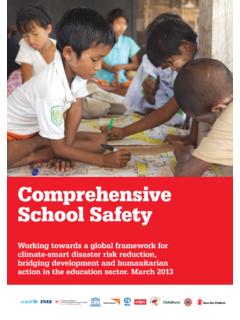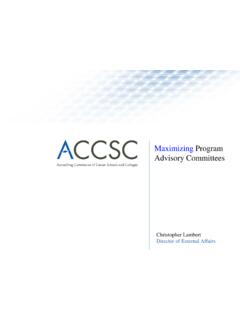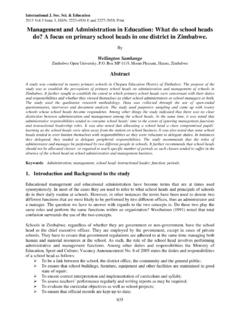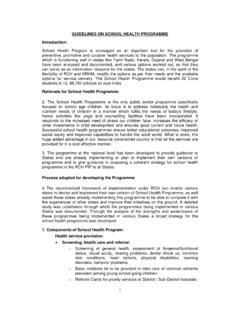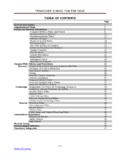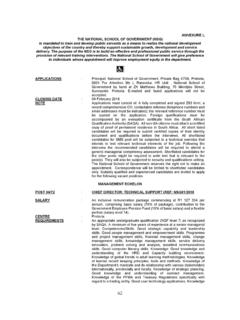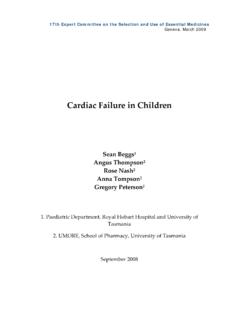Transcription of Antibiotic use for the Prevention and Treatment of ...
1 Second Meeting of the Subcommittee of the Expert Committee on the Selection and Use of Essential Medicines Geneva, 29 September to 3 October 2008 Antibiotic use for the Prevention and Treatment of rheumatic fever and rheumatic Heart Disease in Children Report for the 2nd Meeting of World Health Organization s subcommittee of the Expert Committee of the Selection and Use of Essential Medicines Sean Beggs1 Gregory Peterson2 Anna Tompson2 1. Paediatric Department, Royal Hobart Hospital and University of Tasmania 2. UMORE, University of Tasmania 30th June 2008 Table of Contents Summary_____3 Introduction_____3 Background and Disease Burden of rheumatic Heart Disease_____4 Current Guidelines_____5 Discussion_____7 Primordial and Primary Prevention_____7 Antibiotic Treatment of Acute rheumatic Fever_____7 Secondary Prophylaxis ( Prevention )_____7 Recent publications supporting this regimen_____9 Unanswered Questions_____9 Conclusion_____10 References_____11 Appendix_____14 Page 2 of 15 Summary rheumatic heart disease (RHD) is the most significant sequela of rheumatic fever (RF).
2 Although the exact causal pathway is unknown it seems that some strains of group A streptococcus (GAS) are rheumatogenic and that a small proportion of people in any population (3-5%) have an inherent susceptibility to acute rheumatic fever (ARF).1 ARF is predominantly a disease of children aged 5-14 , 2 However, people can have recurrent episodes well into their In 2005, it was estimated that over million children aged 5-14 years are affected with RHD and 79% of all RHD cases come from less developed countries3. Further, the annual number of new ARF cases in children aged 5-14 years was more than 336,000.
3 Similar to RHD, 95% of cases come from less developed The current antibiotics on the WHO EMLc for RF/RHD are benzathine benzylpenicillin, Phenoxymethylpenicillin and erythromycin. A search was undertaken, using the WHO website, Pub Med and Cochrane Library search engines from the year 2000 to present. Primary prophylaxis is a proven method of Prevention , however has not to date been proven to be cost-effective, resulting in secondary prophylaxis remaining the mainstay of RF/RHD management , as do IM benzathine benzylpenicillin, oral phenoxymethylpenicillin and oral erythromycin.
4 There are currently no additions or alterations to the EMLc required. It is however widely recognised that trials on the best Antibiotic therapy, dose and regimen are sparse. Those that have been undertaken largely occurred 40 or more years ago and were poorly designed. Currently, there is still debate in a number of key areas. Firstly whether IM benzathine benzylpenicillin (considered first line for secondary prophylaxis) should be administered every four weeks, versus every two or three weeks. It is suggested that rigorous clinical trials are required to identify the best regimen available, with consideration of factors such as newer preparations of penicillin, patient acceptance and local variation of the disease progression, are necessary.
5 However, current evidence and discussion suggests that the four-weekly regimen be recommended, reserving the two- or three-weekly regimen for patients at higher risk of recurrence. The internationally accepted dose for the secondary Prevention of ARF in adults is million ,4-7 However, there is some variance in opinion about a cut-off weight, below which a child should receive a lower dose. There is little discussion in the literature regarding this issue. Again, rigorous clinical trials are required to identify the best regimen available. Current pharmacokinetic evidence suggests 600,000 IU be given to patients weighing less than 20kg, and million IU be given to all other patients.
6 Introduction The subcommittee of the Expert Committee on the Selection and Use of Essential Medicines identified rheumatic heart disease as an area that more information was required to inform their decision for future meetings. The aim of this review was to address the following questions that came out of the initial meeting. 1. What are the preferred Antibiotic (s) for Prevention and Treatment of rheumatic heart disease in children under 12 years? 2. Are these already on the EML in an appropriate dosage form and strength? 3. If not, what needs to be added?
7 Page 3 of 15 Accordingly this review focuses on the Antibiotic Treatment and Prevention of rheumatic Disease and does not address the issues of the acute management of Acute rheumatic fever . In order to address the above questions, a literature search and review of existing guidelines was undertaken as outlined in appendix 1. Background and Disease Burden of rheumatic Heart Disease rheumatic heart disease (RHD) is the most significant sequela of rheumatic fever (RF). Although the exact causal pathway is unknown it seems that some strains of group A streptococcus (GAS) are rheumatogenic and that a small proportion of people in any population (3-5%) have an inherent susceptibility to acute rheumatic fever (ARF).
8 1 Acute rheumatic fever (ARF) is an autoimmune consequence of infection with group A streptococci (GAS). It causes an acute generalised inflammatory response and an illness that selectively affects the heart, joints, brain and skin. Despite the dramatic nature of an acute episode, ARF leaves no lasting damage to the brain, joints or skin. However, damage to the heart valves, particularly the mitral and aortic valves, may persist after an acute episode has resolved. This involvement of the cardiac valves is known as rheumatic heart disease (RHD). People who have had ARF previously are much more likely to have subsequent episodes, and these recurrences may cause further damage to the cardiac valves.
9 Thus RHD steadily worsens in people who have multiple episodes of ARF is predominantly a disease of children aged 5-14 years and generally does not affect children less than 3 years old or , 2 However, people can have recurrent episodes well into their The prevalence of RHD peaks in the third and fourth The World Health Organization (WHO) commissioned an Expert Consultation on rheumatic fever and rheumatic Heart Disease, and this WHO Technical Report, as well as a significant amount of recent literature,1, 3, 6, 7, 9-14 outline the important part socioeconomic and environmental factors play in contributing to the magnitude and severity of RF and RHD, and although it is a disease rarely seen now in most developed populations, it is still a cause of major concern in many of the world s developing nations and selected populations of some developed countries.
10 In the 2004 WHO Technical Report9 it was estimated that worldwide, there were deaths per 100,000 population in 2000. In 2005, Carapetis et al3 published a summary of the major findings of an in depth review performed for WHO of the global burden of group A streptococcal diseases. From this review, they estimated that over million children aged 5-14 years are affected with In addition, 79% of all RHD cases came from less developed countries. Further, they estimated the annual number of ARF cases in children aged 5-14 years was more than 336,000. This was extrapolated out to an estimate of 471,000 ARF cases in all age groups.










